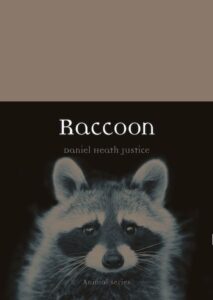 I have never liked the epithet “trash panda” as used in reference to raccoons – nor would I particularly care for it if ever applied to pandas, for that matter (and don’t even get me started on “bin chickens” as applied to ibises). It just seems wrong to denigrate the cleverly opportunistic behaviors of our non-human neighbors for making good use of all that we carelessly discard for their own benefit. The fact that so many species have learned how to make a living out of the vast amount of food that human beings waste is far from showing anything negative about them but puts us in a very poor light indeed.
I have never liked the epithet “trash panda” as used in reference to raccoons – nor would I particularly care for it if ever applied to pandas, for that matter (and don’t even get me started on “bin chickens” as applied to ibises). It just seems wrong to denigrate the cleverly opportunistic behaviors of our non-human neighbors for making good use of all that we carelessly discard for their own benefit. The fact that so many species have learned how to make a living out of the vast amount of food that human beings waste is far from showing anything negative about them but puts us in a very poor light indeed.
The Northern Raccoon (“raccoon” often recorded as being an English adaptation of the Powhatan word “aroughcun”), Procyon lotor, is a remarkably dextrous, highly adaptable, and famously synanthropic member of the Procyonidae, a family of omnivores that also includes other such charismatic creatures as the ringtails, coatis, and kinkajous. As such, it has also become a frequent character in myths, folktales, stories and at least one very successful motion picture, a metaphor for a number of characteristics (not all of them positive), and at least one very unpleasant racial epithet.
Prof. Daniel Heath Justice has collected a wealth of information about these multi-faceted cultural aspects and combined it with a presentation of the species’ natural history in his new Raccoon, part of the Animal series from Reaktion Books distributed in the U.S. by the University of Chicago Press. I’ve previously read at least a dozen of the volumes in this series and each one, written by a wide range of authors across the sciences and the humanities, has presented their respective subjects in ways that were both interesting as well as very informative. Thus I’m very much looking forward to what Prof. Justice has to present about an animal species that I I’ve known for my entire conscious life. Or, as I’ll find out, have I?
Available from:
If you enjoyed reading this, please consider signing up for The Well-read Naturalist's newsletter. You'll receive a helpful list of recently published reviews, short essays, and notes about books in your e-mail inbox once each fortnight.

